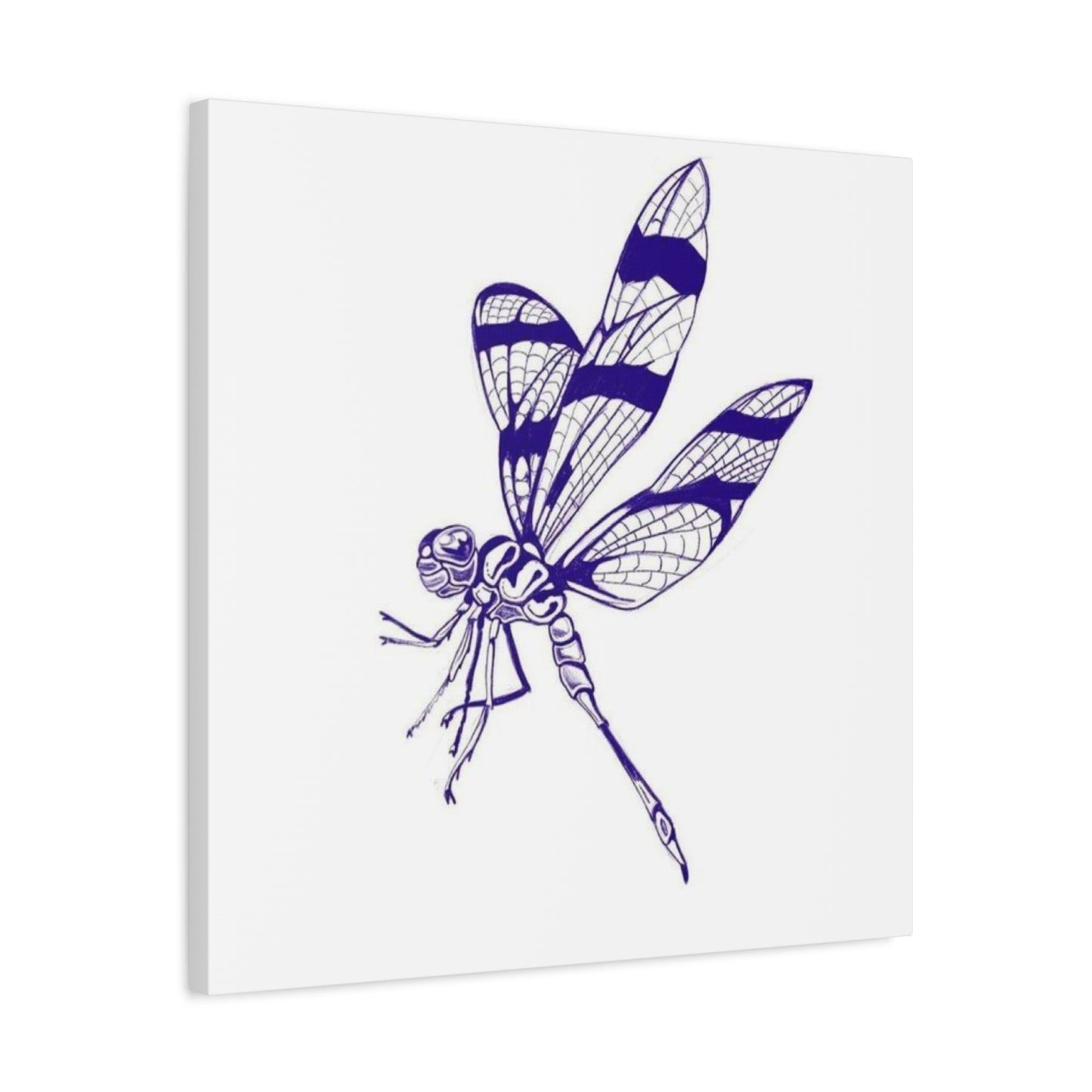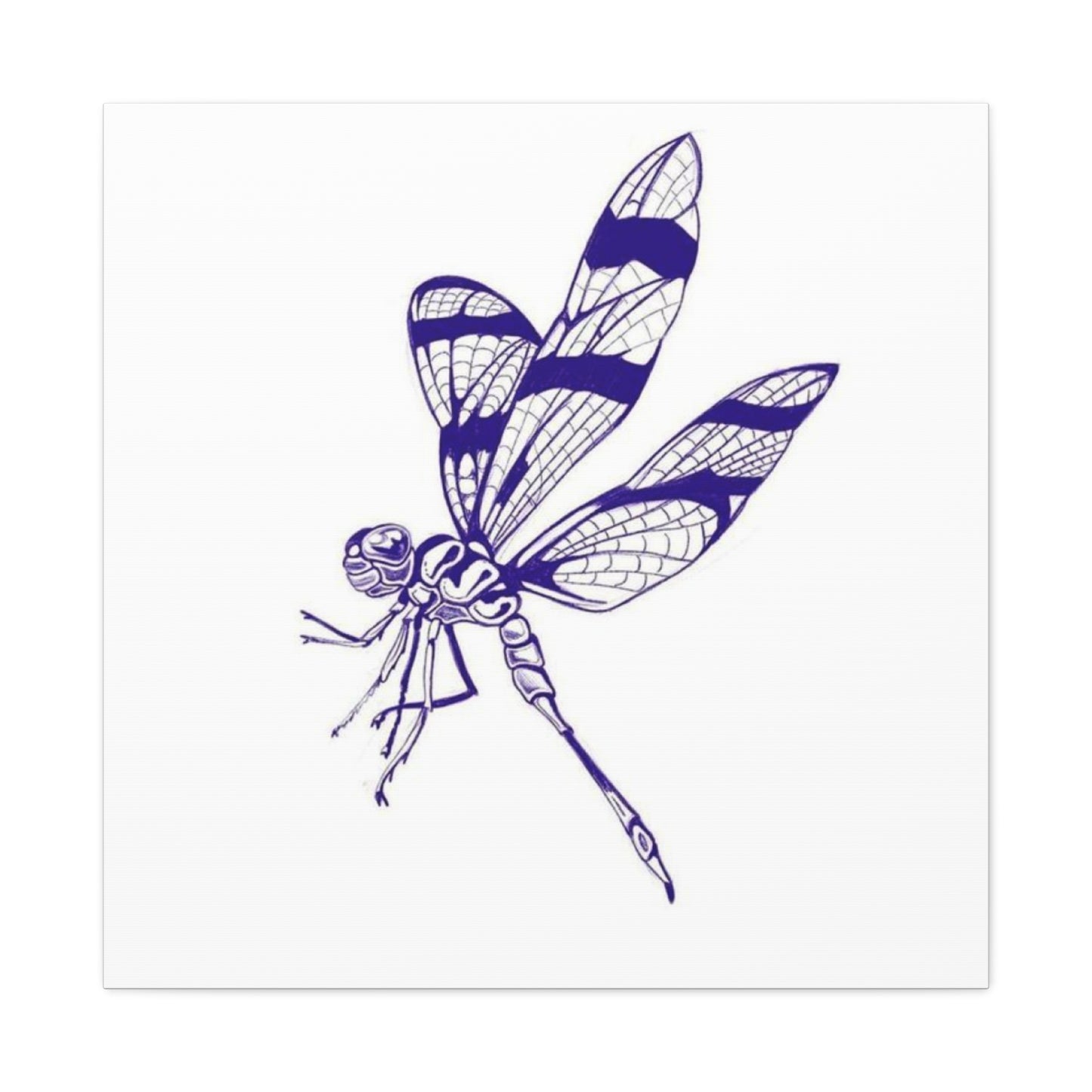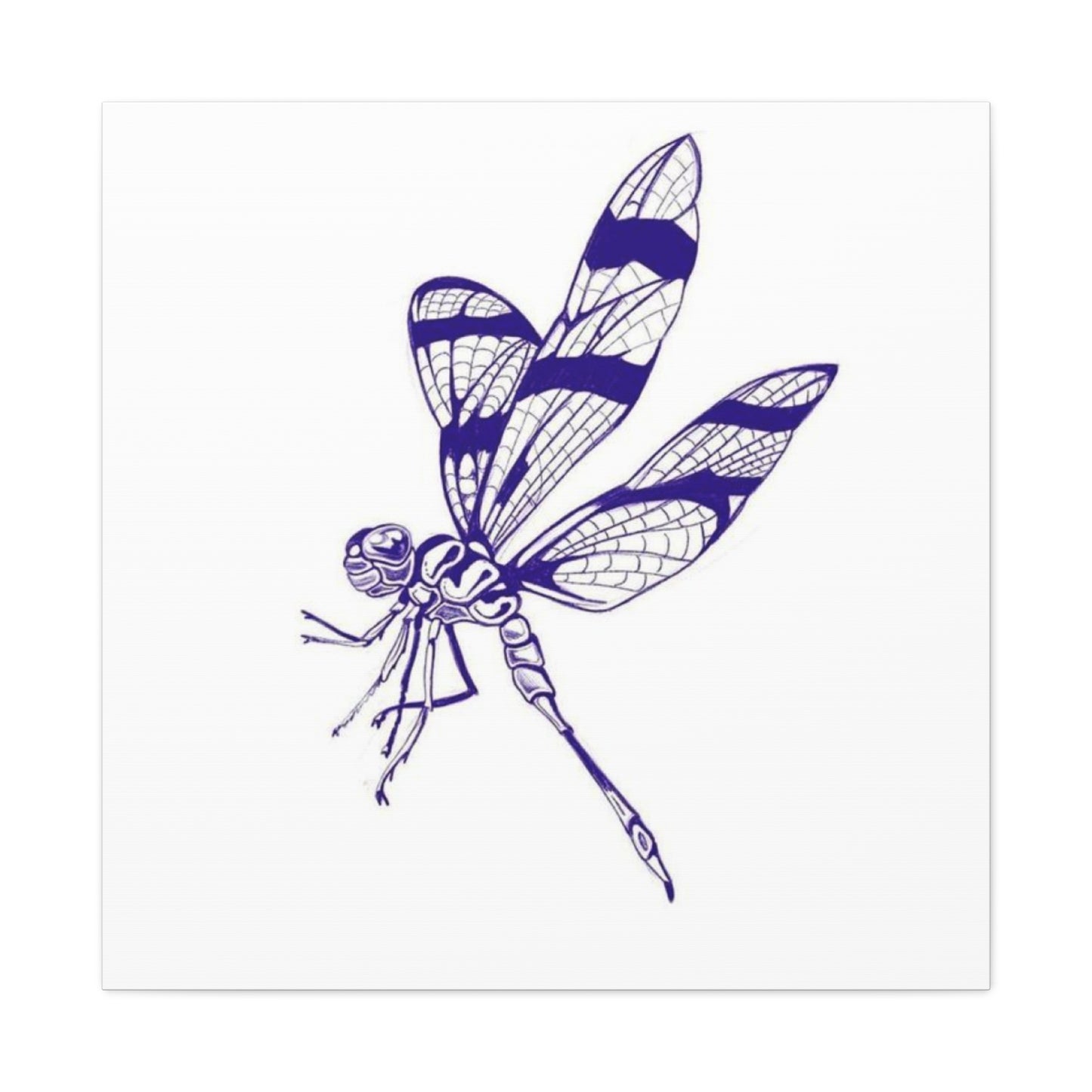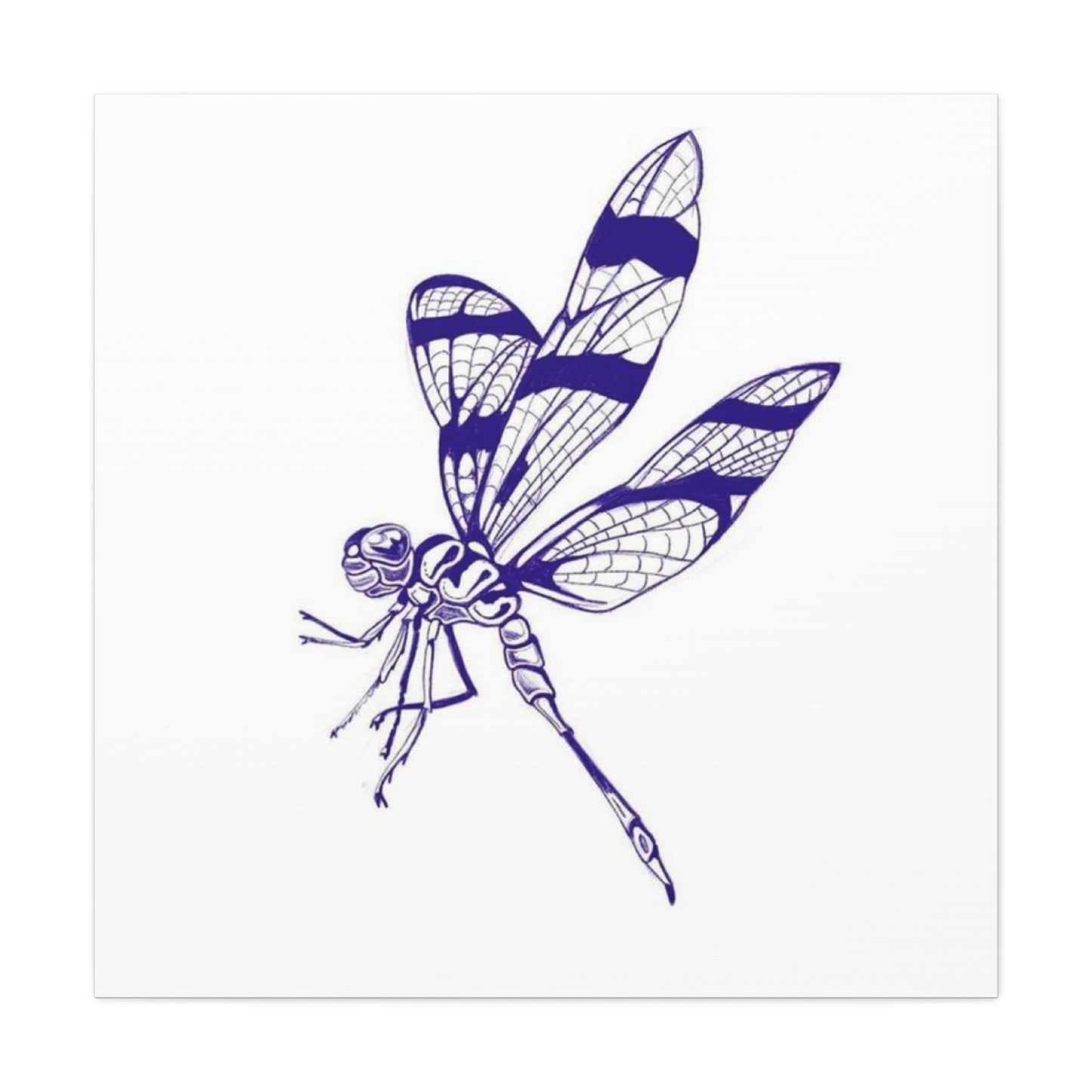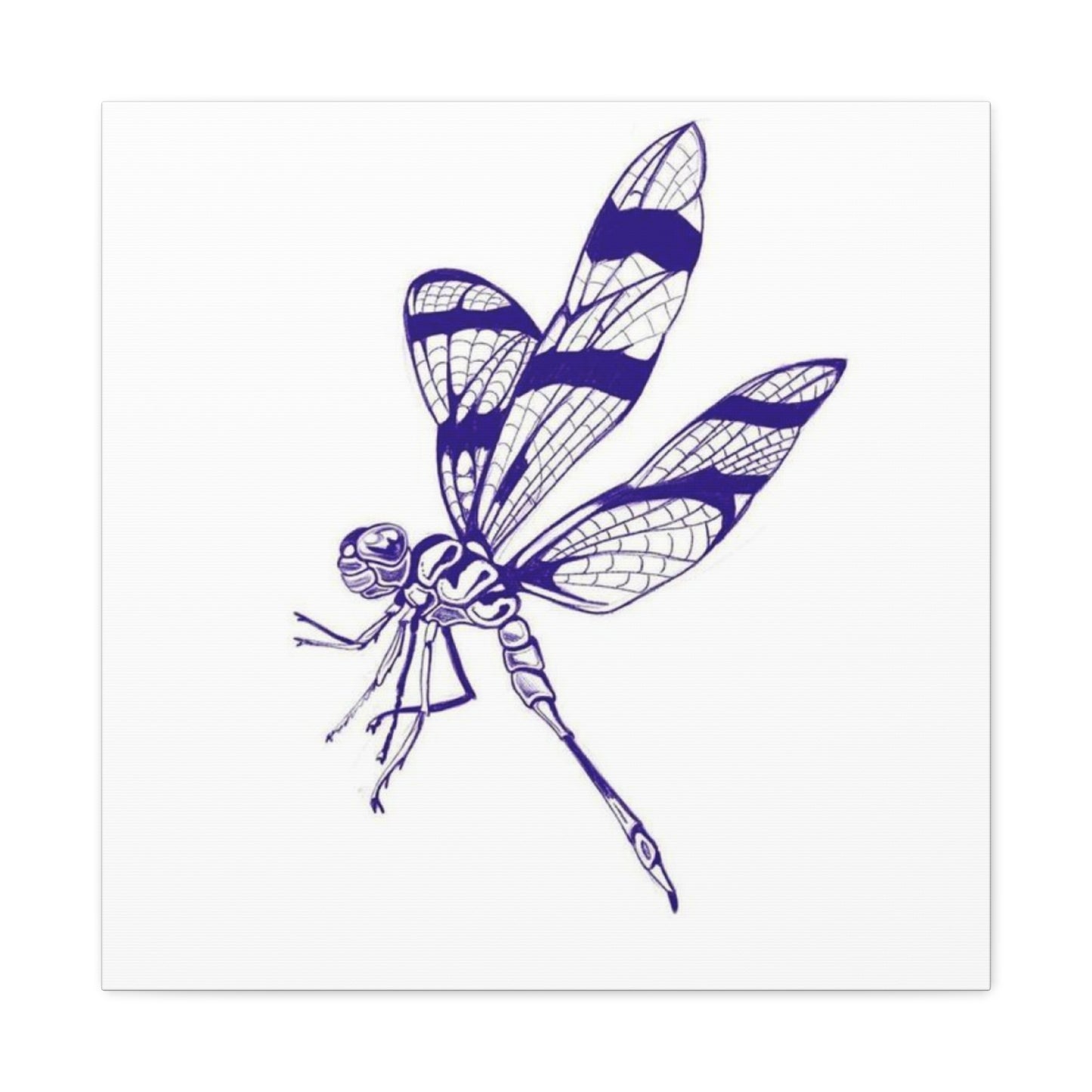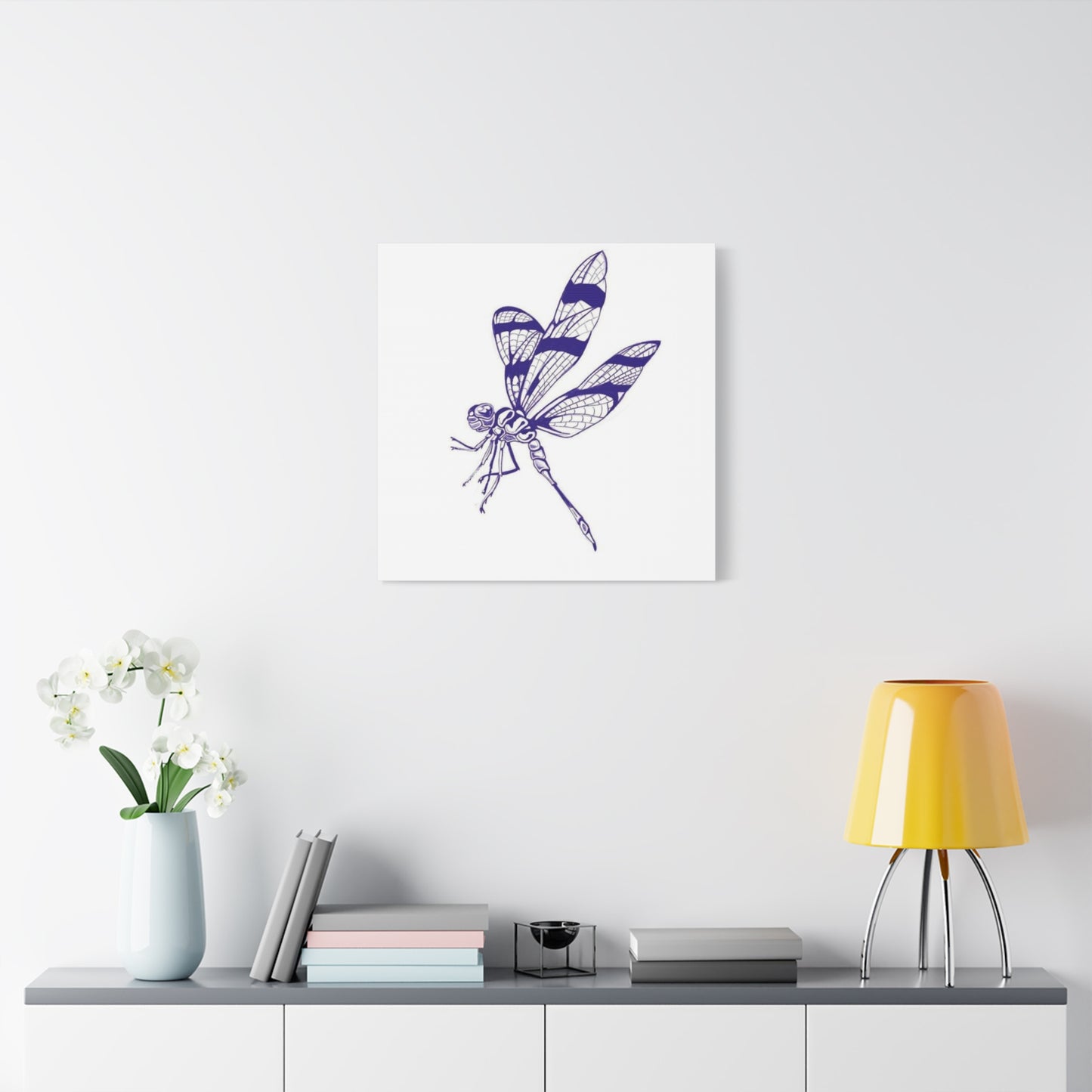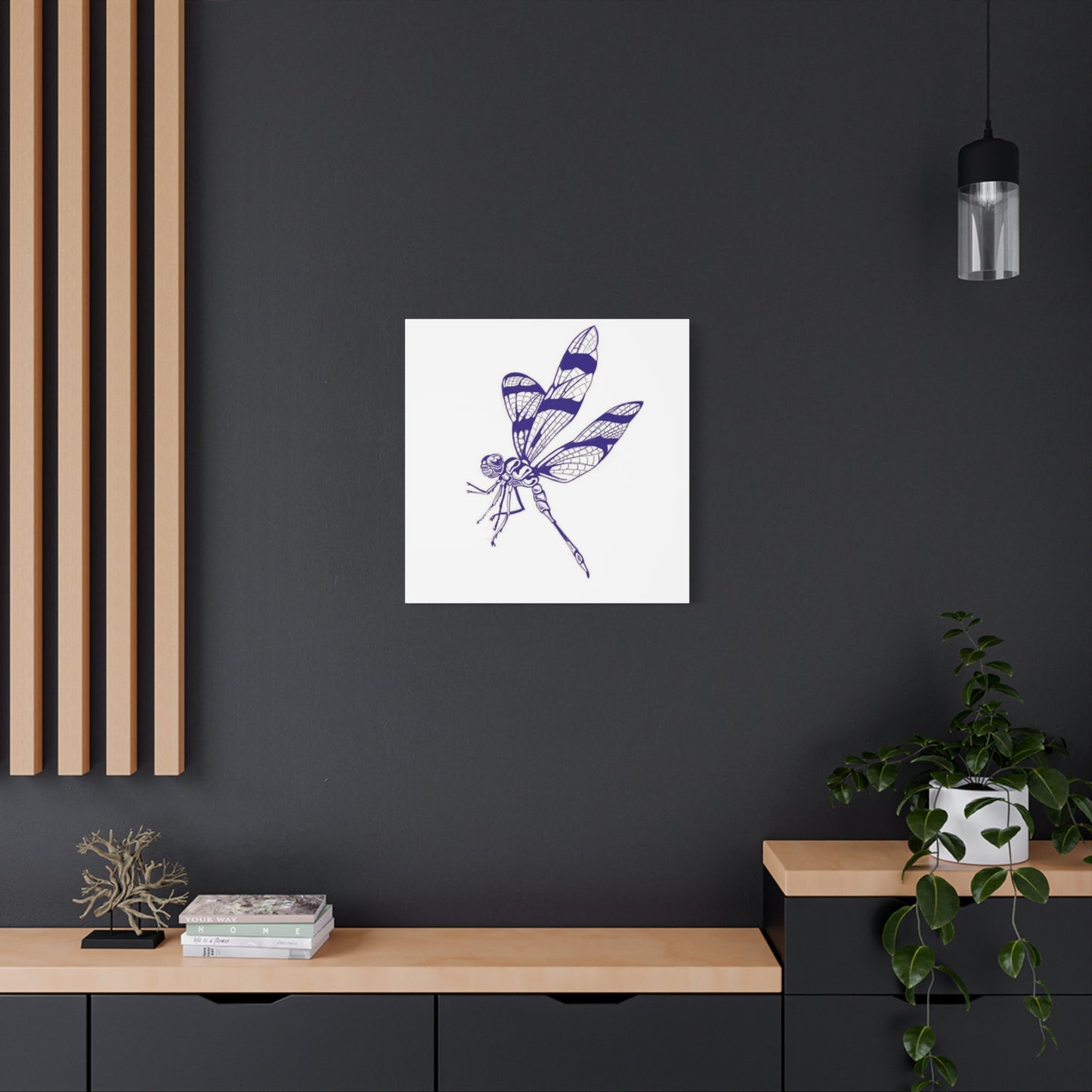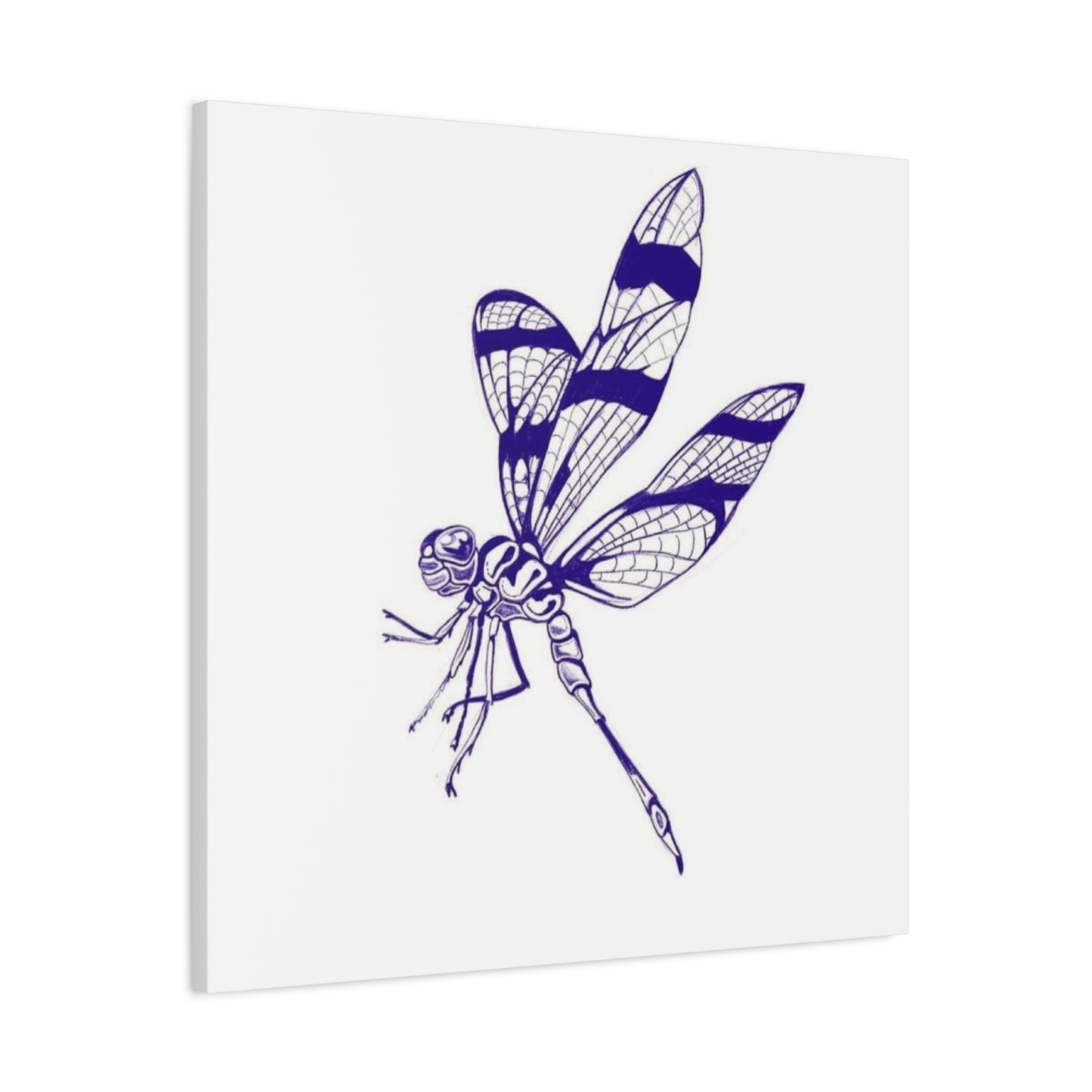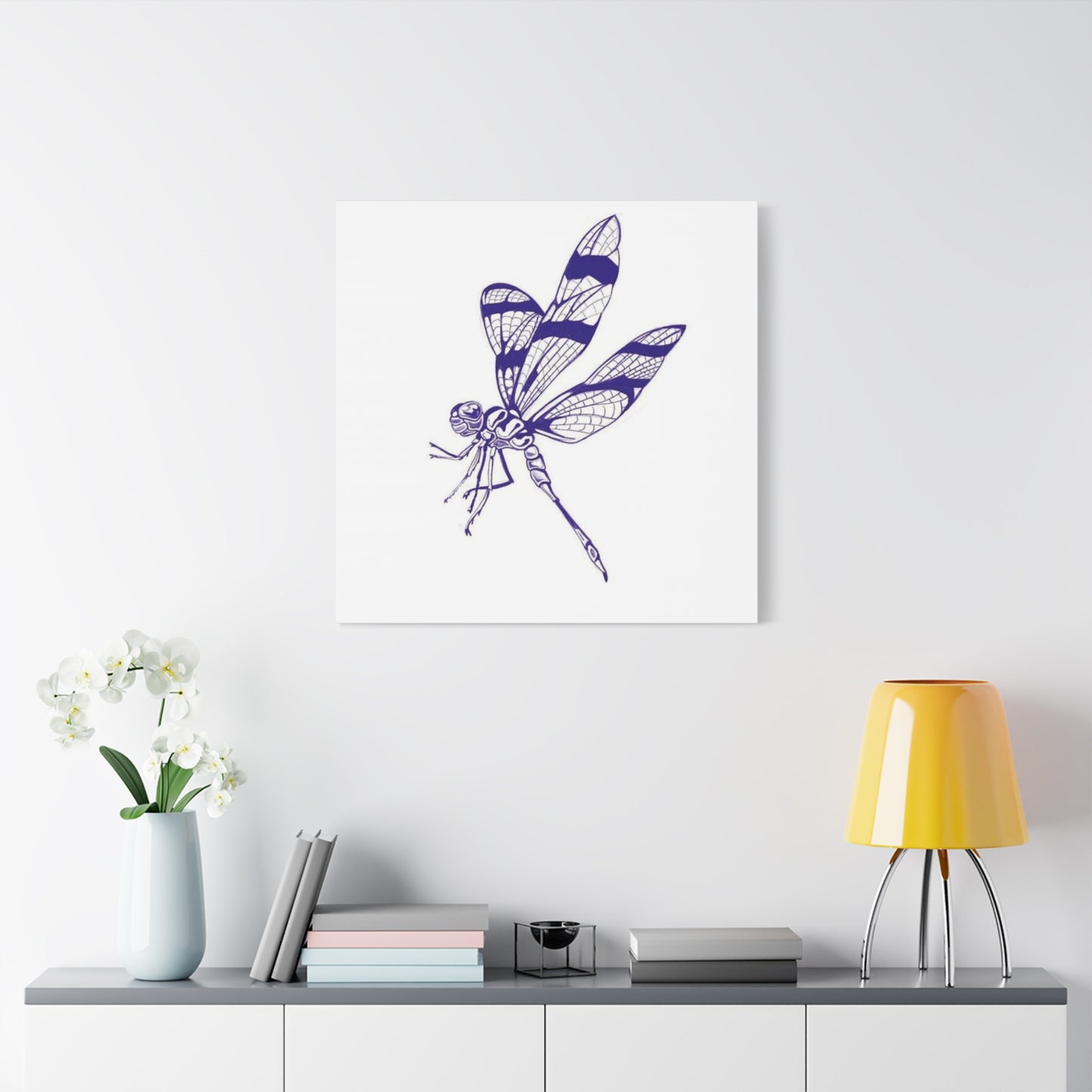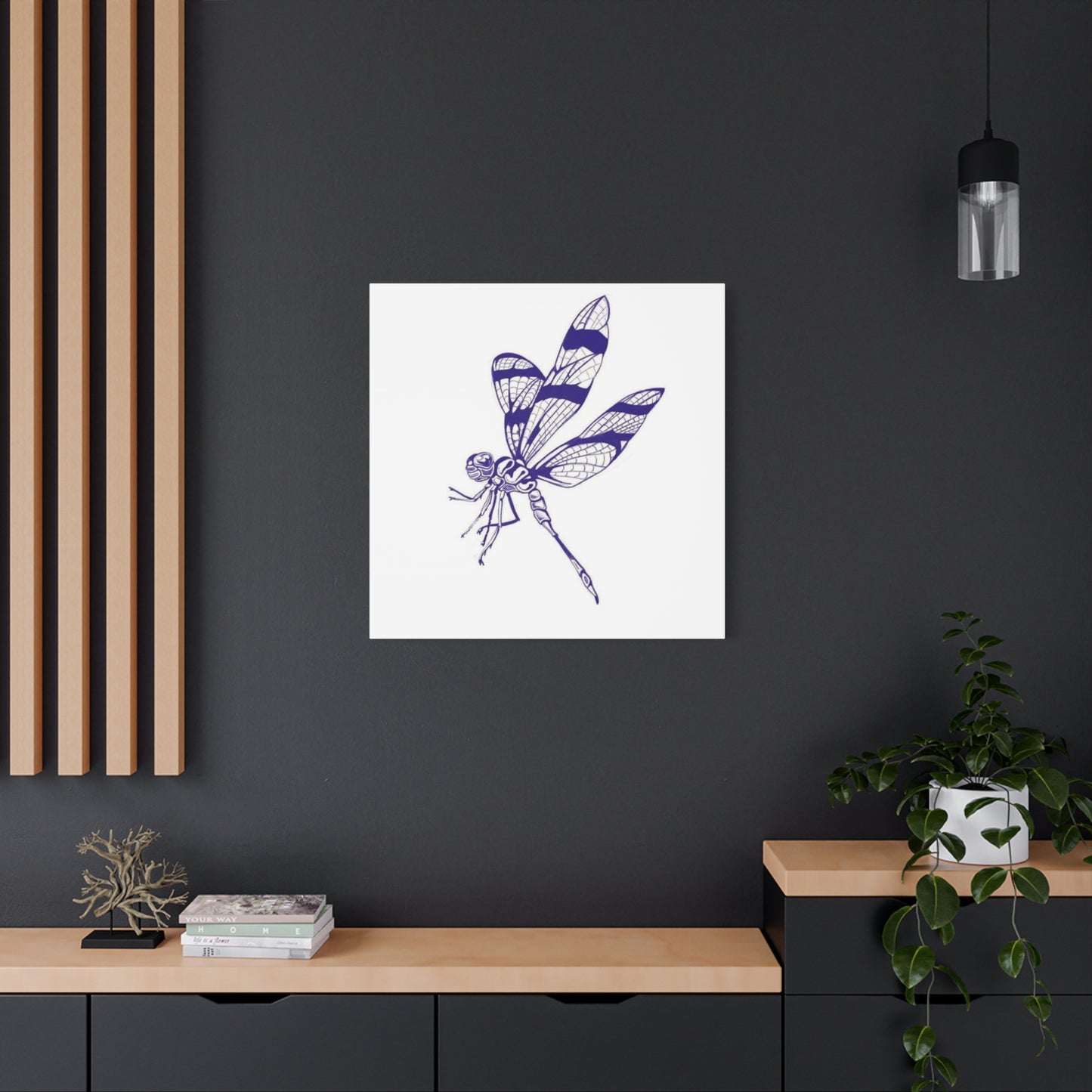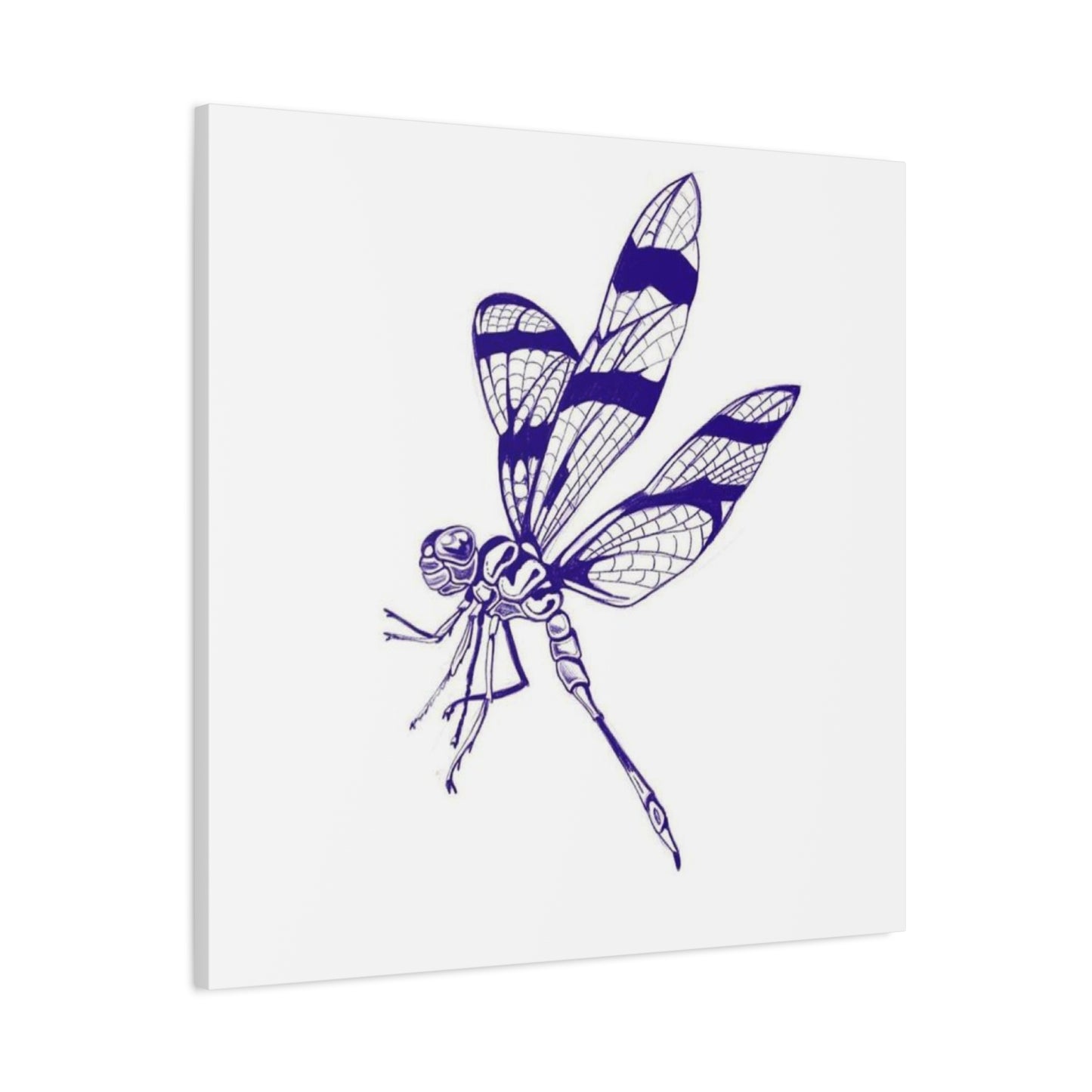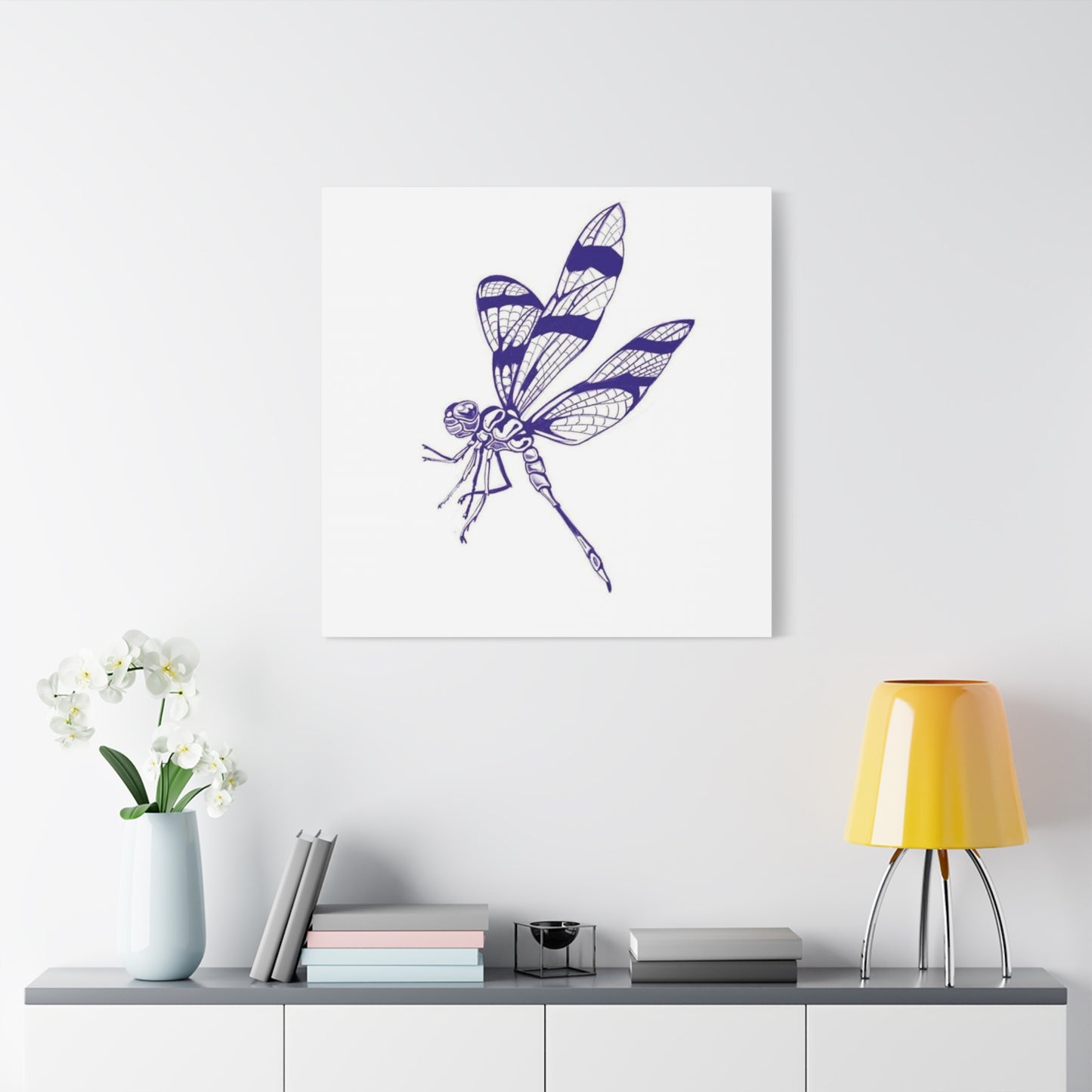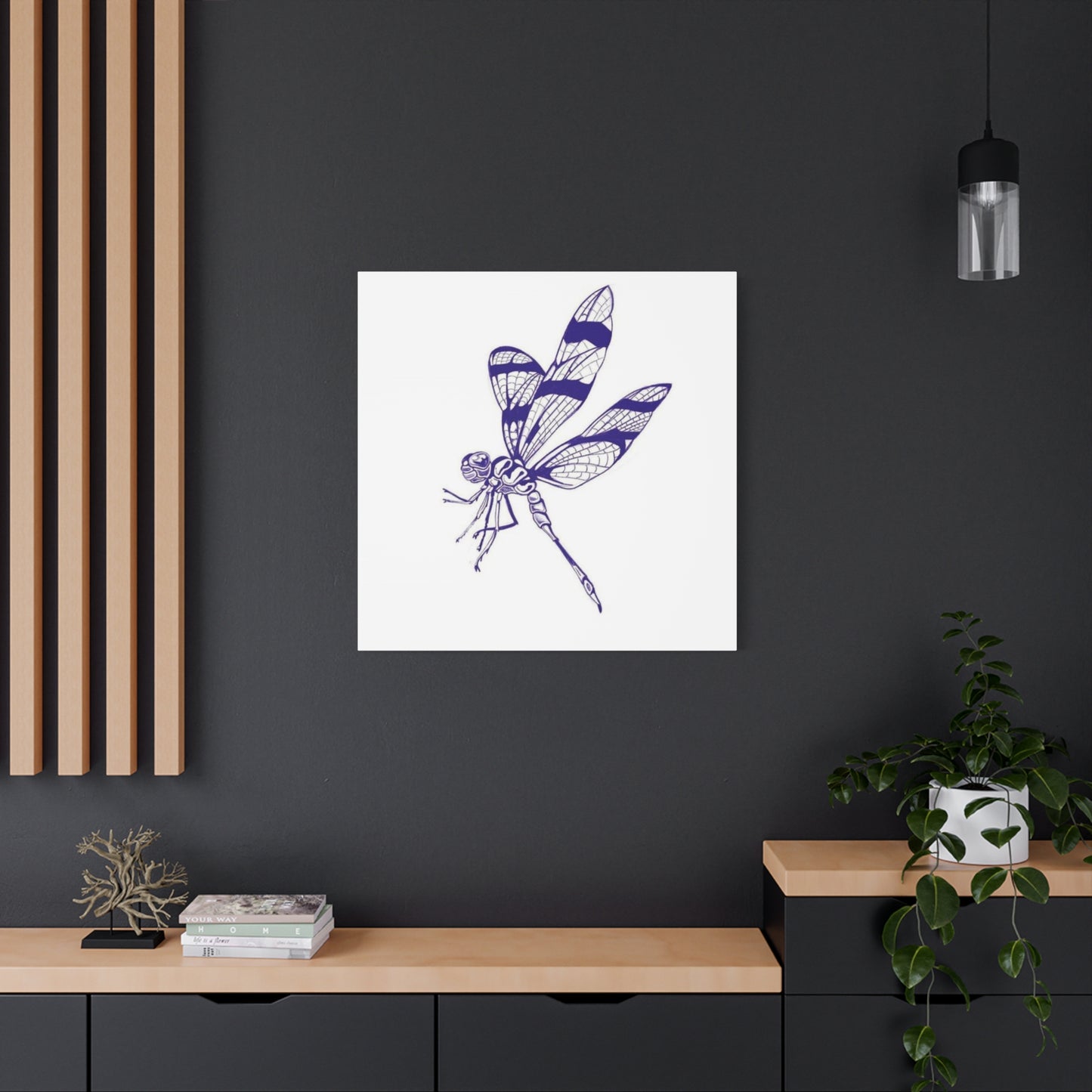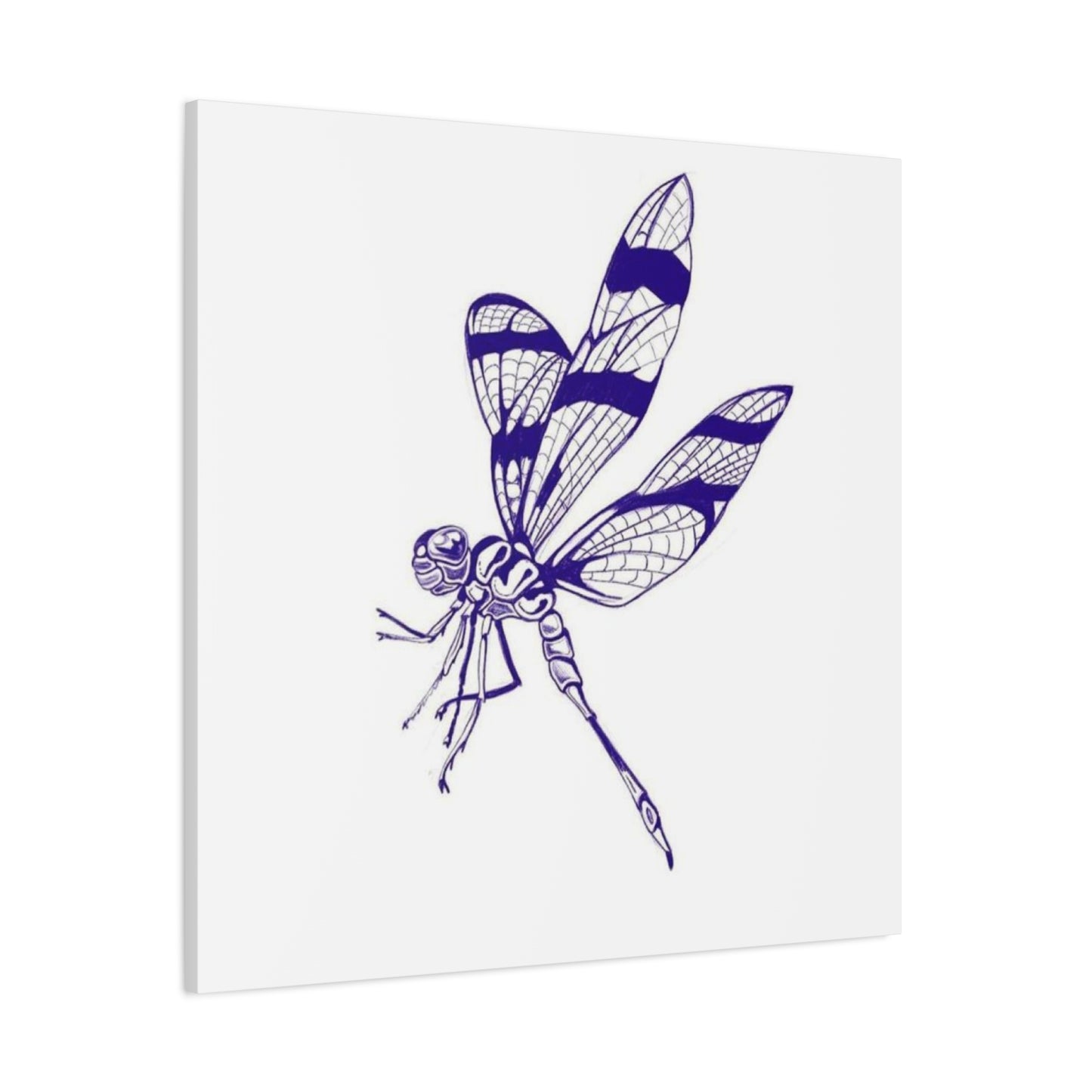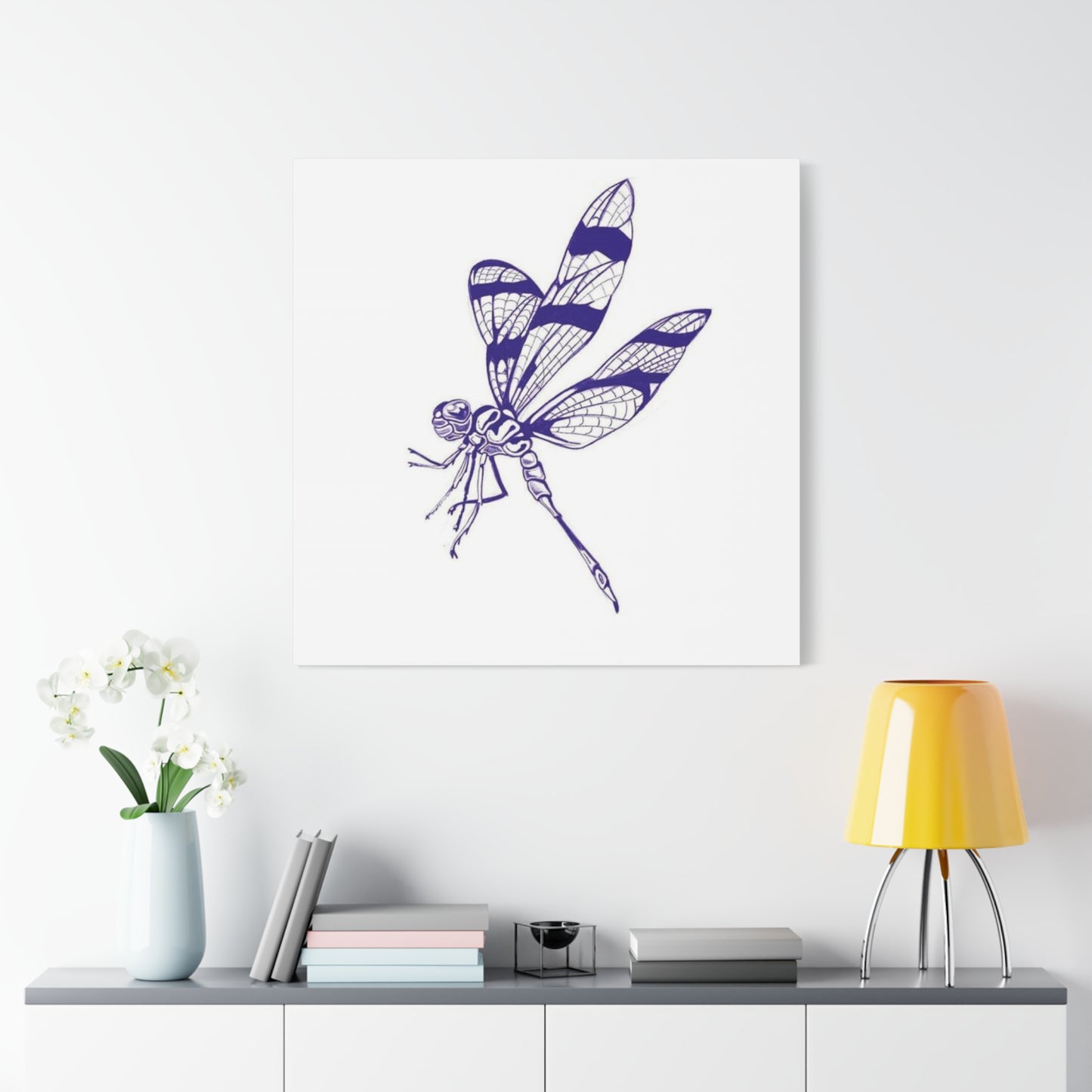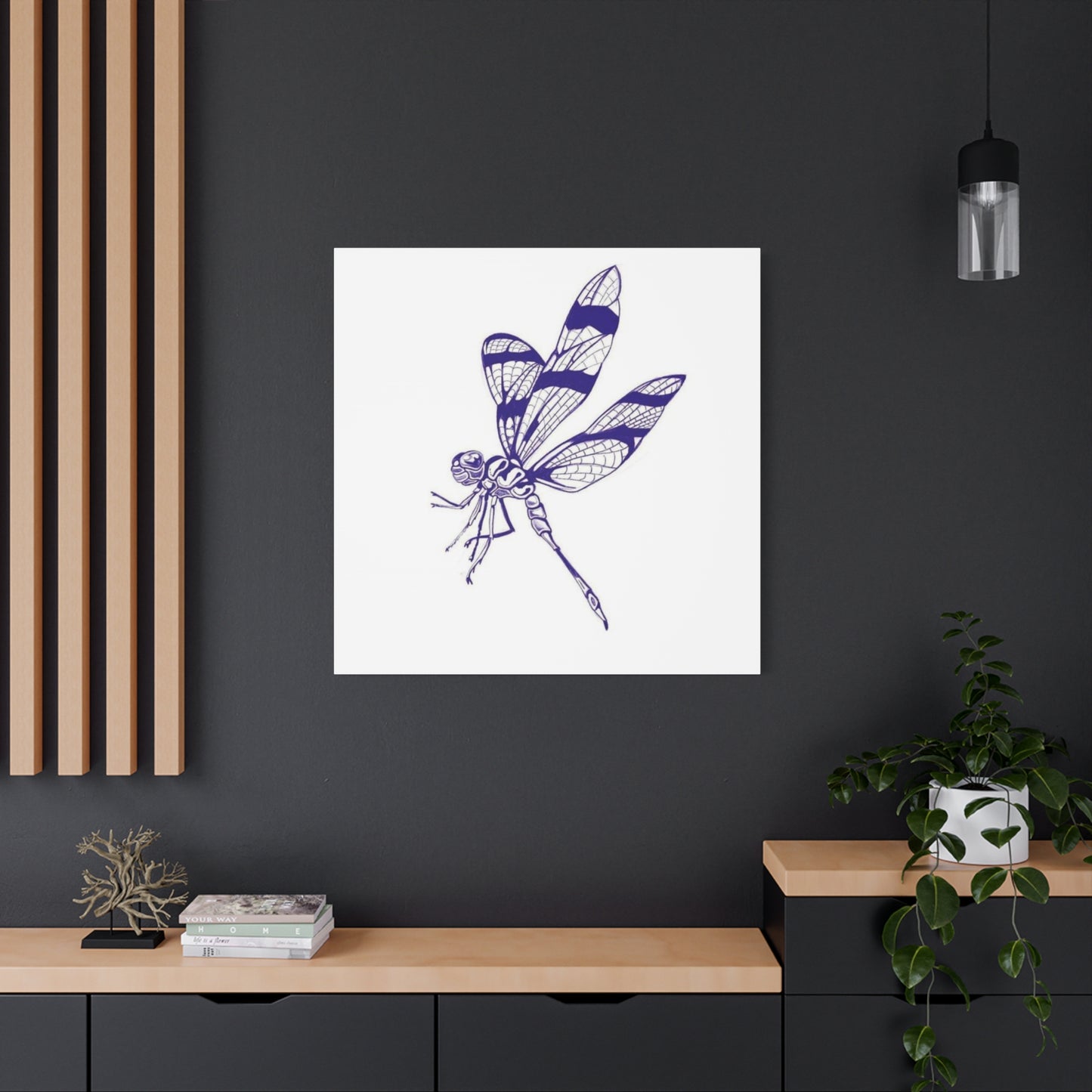Dragonfly Wall Art: Transforming Spaces with Nature's Most Enchanting Creatures
Dragonfly artwork has emerged as one of the most captivating and meaningful forms of nature-inspired decoration in contemporary interior design. These ethereal creatures, with their gossamer wings and graceful movements, have captured the imagination of artists and homeowners alike, creating a bridge between the natural world and our living spaces. The fascination with dragonfly motifs extends far beyond mere aesthetic appeal, encompassing deep symbolic meanings, cultural significance, and the innate human desire to connect with nature's most delicate and beautiful manifestations.
The artistry surrounding dragonfly imagery represents more than just decorative elements; it embodies transformation, adaptability, and the ephemeral beauty of life itself. These remarkable insects, which spend most of their lives underwater before emerging as winged creatures of extraordinary grace, serve as powerful metaphors for personal growth, change, and the journey from one phase of existence to another. When incorporated into home decor, dragonfly artwork brings with it layers of meaning that resonate with viewers on both conscious and subconscious levels.
In recent years, the popularity of dragonfly-themed artwork has soared, driven by increasing awareness of environmental conservation, mindfulness practices, and the growing trend toward biophilic design. This movement emphasizes the human connection to nature and seeks to incorporate natural elements into our built environments to promote well-being, creativity, and a sense of harmony. Dragonfly artwork perfectly encapsulates these principles, offering a way to bring the outdoors inside while maintaining the sophistication and elegance that modern interior design demands.
The versatility of dragonfly imagery allows it to complement virtually any design aesthetic, from minimalist contemporary spaces to rustic farmhouse environments, from urban lofts to suburban family homes. Whether rendered in realistic detail or stylized abstraction, dragonfly artwork possesses an inherent ability to create focal points that draw the eye while simultaneously promoting feelings of tranquility and wonder. This unique combination of visual impact and emotional resonance makes dragonfly artwork an increasingly popular choice among interior designers, art collectors, and homeowners seeking to create spaces that reflect their values and aspirations.
Understanding the Deeper Meanings of Dragonfly Imagery
The symbolic significance of dragonflies transcends cultural boundaries, appearing in mythologies, spiritual traditions, and folklore from around the world. These creatures represent transformation in its most profound sense, embodying the concept of metamorphosis not just as a biological process but as a spiritual and emotional journey. The dragonfly's life cycle, which involves a dramatic transformation from aquatic nymph to aerial acrobat, serves as a powerful metaphor for personal evolution, spiritual awakening, and the ability to adapt to changing circumstances.
In Japanese culture, dragonflies are revered as symbols of courage, strength, and happiness. The samurai particularly valued dragonfly imagery, believing these creatures represented invincibility and success in battle. This association stems from the dragonfly's remarkable hunting abilities and its capacity to fly in all directions, including backward, making it nearly impossible for predators to catch. When dragonfly artwork is displayed in homes, it can serve as a reminder of these qualities, encouraging resilience and determination in the face of life's challenges.
Native American traditions view dragonflies as messengers of wisdom and enlightenment, creatures that bridge the gap between the physical and spiritual worlds. Many tribes believe that dragonflies carry prayers to the spirit world and bring back messages of guidance and protection. This spiritual dimension adds depth to dragonfly artwork, making it particularly meaningful for meditation spaces, prayer rooms, or any area where contemplation and reflection are valued.
The connection between dragonflies and water further enhances their symbolic significance. Water represents the subconscious mind, emotions, and the flow of life itself. Dragonflies, which begin their lives in water before taking to the air, symbolize the journey from the depths of the unconscious to the clarity of conscious awareness. This progression from water to air, from hidden to visible, from earthbound to free-flying, resonates deeply with human experiences of growth, healing, and self-discovery.
The iridescent quality of dragonfly wings adds another layer of symbolism related to illusion, magic, and the ability to see beyond surface appearances. The way dragonfly wings shimmer and change color depending on the angle of light reflects the multifaceted nature of reality and the importance of looking at situations from different perspectives. Artwork featuring dragonflies can serve as daily reminders to remain open to new viewpoints and to appreciate the complexity and beauty that exists in even the simplest moments.
Color symbolism also plays a significant role in dragonfly artwork. Blue dragonflies are often associated with peace, tranquility, and communication, making them ideal for bedrooms, meditation spaces, or home offices. Green dragonflies represent growth, renewal, and connection to nature, perfect for living rooms or spaces where family gatherings occur. Red dragonflies symbolize passion, energy, and life force, adding vibrancy to creative spaces or exercise areas. Understanding these color associations can help homeowners choose dragonfly artwork that aligns with the intended energy and purpose of each room.
Creating Harmony: Incorporating Dragonfly Artwork into Contemporary Living Spaces
The integration of dragonfly artwork into modern living spaces requires careful consideration of both aesthetic principles and the unique qualities that make these pieces so compelling. Unlike static decorative elements, dragonfly artwork possesses an inherent sense of movement and life that can dramatically alter the energy and atmosphere of a room. This dynamic quality makes proper placement and selection crucial for achieving the desired effect.
When selecting dragonfly artwork for contemporary spaces, consider the scale and proportion relative to the surrounding architecture and furniture. Large-scale dragonfly pieces work exceptionally well as statement pieces in spacious rooms with high ceilings, where they can command attention without overwhelming the space. These dramatic installations often feature multiple dragonflies in various sizes and positions, creating a sense of movement and natural choreography that brings walls to life.
Medium-sized dragonfly artwork offers greater versatility and can be effectively used in groupings or as part of gallery walls. The key to successful grouping lies in maintaining visual coherence while allowing each piece to contribute to the overall narrative. Consider varying the heights, orientations, and artistic styles within the grouping while maintaining a consistent color palette or thematic approach. This technique creates visual interest while preserving the harmonious feel that dragonfly imagery naturally provides.
Smaller dragonfly pieces work beautifully as accent elements, adding touches of nature-inspired elegance to intimate spaces such as powder rooms, reading nooks, or hallway alcoves. These pieces often work best when positioned at eye level and illuminated with appropriate lighting to highlight the intricate details and colors that make dragonfly artwork so captivating.
The frame selection for dragonfly artwork deserves special attention, as the right frame can enhance the piece while the wrong choice can detract from its impact. Natural wood frames complement the organic nature of dragonfly imagery while adding warmth and texture to the presentation. Metal frames in copper, bronze, or brushed silver can echo the metallic qualities often found in dragonfly wings while maintaining a contemporary aesthetic. For minimalist spaces, consider frameless presentations or floating frames that allow the artwork to appear to hover on the wall, mimicking the weightless quality of dragonflies in flight.
Lighting plays a crucial role in showcasing dragonfly artwork effectively. These pieces often feature subtle details, delicate lines, and nuanced color variations that require proper illumination to be fully appreciated. Track lighting, picture lights, or strategically placed accent lamps can highlight the artwork while creating dramatic shadows that add depth and dimension to the piece. For artwork featuring metallic elements or glossy surfaces, consider adjustable lighting that can be positioned to minimize glare while maximizing visual impact.
The surrounding decor should complement rather than compete with dragonfly artwork. Natural materials such as wood, stone, and organic textiles create harmonious backdrops that allow the artwork to shine. Plants and other living elements can enhance the nature-inspired theme while adding layers of texture and color that support the overall design concept. Water features, such as small fountains or aquarium installations, can create thematic connections to the dragonfly's aquatic origins while adding soothing sounds that enhance the peaceful atmosphere these pieces naturally create.
Artistic Techniques and Mediums: Exploring the Diversity of Dragonfly Artwork
The world of dragonfly artwork encompasses an extraordinary range of artistic techniques and mediums, each offering unique advantages and aesthetic qualities that appeal to different tastes and design preferences. Understanding these various approaches can help art enthusiasts and interior decorators select pieces that best complement their spaces while achieving their desired visual and emotional impact.
Traditional painting techniques continue to dominate the dragonfly art market, with watercolor being particularly well-suited to capturing the delicate, translucent quality of dragonfly wings. Watercolor's inherent fluidity and transparency allow artists to create pieces that seem to glow with inner light, perfectly mimicking the ethereal quality of these creatures in nature. The unpredictable nature of watercolor also introduces organic variations and subtle imperfections that add authenticity and life to the artwork.
Oil painting techniques offer artists greater control over detail and color saturation, allowing for hyperrealistic representations that capture every intricate vein in a dragonfly's wing or every subtle gradation of color across its body. These pieces often serve as stunning focal points in traditional or transitional interiors where the richness and depth of oil paint complement classic design elements and warm color palettes.
Acrylic painting provides versatility and durability while allowing for both realistic and abstract interpretations of dragonfly subjects. The fast-drying nature of acrylics enables artists to build up layers quickly, creating pieces with both fine detail and bold, expressive brushwork. Mixed-media approaches combining acrylics with other materials can add texture and dimension that brings dragonfly artwork to life in unexpected ways.
Digital art has revolutionized dragonfly artwork creation, enabling artists to manipulate colors, patterns, and compositions with precision impossible to achieve through traditional methods alone. Digital techniques allow for the creation of fantastical dragonfly imagery that pushes beyond realistic representation while maintaining the essential characteristics that make these creatures so appealing. High-quality digital prints can reproduce these creations with stunning clarity and color accuracy, making sophisticated dragonfly artwork accessible to broader audiences.
Photography-based dragonfly artwork captures these creatures in their natural habitats, preserving moments of beauty that might otherwise be missed. Macro photography techniques reveal intricate details invisible to the naked eye, while creative post-processing can enhance colors and create artistic effects that transform simple photographs into compelling wall art. Black and white photography of dragonflies can create striking minimalist pieces that work particularly well in contemporary or industrial design settings.
Sculptural approaches to dragonfly artwork add three-dimensional interest to wall displays. Metal sculptures featuring dragonfly motifs can cast intriguing shadows while adding textural contrast to smooth wall surfaces. Wire sculptures capture the delicate structure of dragonfly anatomy while maintaining an airy, lightweight appearance that doesn't overwhelm smaller spaces. Mixed-media sculptures incorporating natural materials such as wood, stone, or dried plants can create pieces that blur the line between artwork and natural specimens.
Textile arts offer another avenue for dragonfly-inspired wall decoration. Embroidered pieces can achieve remarkable detail while adding softness and warmth to room designs. Batik and tie-dye techniques can create flowing, organic backgrounds that complement dragonfly motifs beautifully. Quilted wall hangings featuring dragonfly patterns combine traditional craftsmanship with contemporary design sensibilities.
Glass art techniques are particularly well-suited to dragonfly subjects, as glass can mimic the transparency and iridescence of dragonfly wings with remarkable accuracy. Stained glass panels featuring dragonfly designs can serve as functional room dividers while creating stunning light displays when backlit. Fused glass techniques allow artists to create layered compositions with depth and complexity that capture the multifaceted nature of dragonfly anatomy.
Color Psychology and Dragonfly Artwork: Creating Emotional Resonance Through Hue
The color choices in dragonfly artwork significantly influence the emotional impact and psychological effects these pieces have on viewers and room occupants. Understanding color psychology in relation to dragonfly imagery can help homeowners select artwork that not only complements their decor but also supports their lifestyle goals and emotional well-being.
Blue-toned dragonfly artwork promotes feelings of calm, serenity, and peaceful contemplation. These pieces work exceptionally well in bedrooms, bathrooms, and meditation spaces where relaxation and stress reduction are priorities. The association between blue and water enhances the natural connection to the dragonfly's aquatic origins while creating environments that feel refreshing and restorative. Deeper blue tones can add sophistication and depth to formal spaces, while lighter blues create airy, expansive feelings in smaller rooms.
Green dragonfly artwork connects viewers with nature while promoting feelings of growth, renewal, and harmony. These pieces are particularly effective in living rooms, kitchens, and family spaces where social interaction and nurturing activities occur. Green's association with healing and balance makes dragonfly artwork in this color palette ideal for recovery spaces, therapy rooms, or any environment where emotional healing is desired. The variety of green tones available allows for subtle or dramatic statements depending on the specific shade selected.
Purple and violet dragonfly artwork taps into associations with spirituality, creativity, and transformation. These colors enhance the metamorphosis symbolism inherent in dragonfly imagery while creating spaces that encourage introspection and artistic expression. Purple dragonfly art works beautifully in studios, craft rooms, and personal retreat spaces where creative activities take place.
Red and orange dragonfly artwork energizes spaces while maintaining the graceful elegance that makes these creatures so appealing. These warm colors can add vibrancy to neutral decor schemes without overwhelming other design elements. The energy associated with red and orange makes this color palette particularly suitable for exercise areas, game rooms, or social spaces where activity and excitement are welcomed.
Yellow dragonfly artwork brings sunshine and optimism to any space, creating feelings of joy and mental clarity. These pieces work wonderfully in home offices, study areas, and breakfast nooks where focus and positive energy are beneficial. The association between yellow and intellectual stimulation makes this color choice ideal for spaces dedicated to learning and mental activities.
Monochromatic dragonfly artwork, whether in black and white, sepia tones, or single-color variations, offers timeless elegance that transcends changing color trends. These pieces rely on form, composition, and artistic technique rather than color impact, making them suitable for sophisticated interiors where understated luxury is preferred. Monochromatic pieces also offer greater flexibility when room color schemes change over time.
Metallic accents in dragonfly artwork, whether gold, silver, copper, or bronze, add luxury and sophistication while reflecting light in ways that bring additional life to the pieces. These metallic elements can echo other finishes in the room while creating focal points that catch and hold attention. The reflective quality of metallic accents can also help smaller rooms appear larger and brighter.
Understanding how different colors interact with various lighting conditions is crucial for selecting dragonfly artwork that will look its best throughout the day. Warm artificial lighting enhances red, orange, and yellow tones while potentially dulling blues and greens. Cool fluorescent lighting can make blues and greens appear more vibrant while washing out warmer colors. Natural lighting changes throughout the day, creating different moods and appearances for the same piece of artwork.
The surrounding color palette of the room must also be considered when selecting dragonfly artwork. Complementary color schemes, where artwork colors contrast with wall and furnishing colors, create dynamic, energizing environments. Analogous color schemes, where artwork colors harmonize with existing room colors, create cohesive, restful spaces. Neutral room backgrounds allow colorful dragonfly artwork to serve as dramatic focal points, while colorful room schemes may benefit from more subdued artwork that adds interest without visual competition.
Celebrating Year-Round Beauty with Dragonfly Themes
Dragonfly artwork possesses a unique ability to reflect and celebrate the changing seasons while maintaining its relevance and appeal throughout the year. This adaptability makes dragonfly-themed decor an excellent investment for homeowners who enjoy refreshing their spaces with seasonal touches without completely redesigning their interiors.
Spring representations of dragonfly artwork often emphasize themes of emergence, renewal, and awakening. Artists frequently depict dragonflies among fresh green foliage, cherry blossoms, or other early spring flowers to capture the sense of new beginnings that characterizes this season. The pale greens, soft pinks, and gentle yellows commonly found in spring-themed dragonfly artwork create environments that feel fresh and optimistic, perfect for bedrooms, sunrooms, or any space where morning light creates natural connections to the season's energy.
The translucent quality of dragonfly wings makes them particularly well-suited to spring artwork, as artists can capture the delicate, ephemeral quality of early season growth and the tentative beauty of creatures just emerging from winter dormancy. Watercolor techniques work exceptionally well for spring dragonfly art, as the medium's flowing, organic qualities mirror the natural processes of growth and change that define the season.
Summer dragonfly artwork celebrates the peak of these creatures' activity and visibility in nature. Vibrant blues, lush greens, and warm golden tones dominate summer-themed pieces, often featuring dragonflies hovering over lily pads, skimming across pond surfaces, or dancing in meadows filled with wildflowers. The intensity and energy of summer dragonfly art make these pieces ideal for social spaces, outdoor rooms, and areas where family activities and entertainment occur.
Artists often incorporate elements of water and light into summer dragonfly compositions, reflecting the season's longer days and the increased activity levels of both the insects and the people who observe them. The interplay between light and shadow, movement and stillness, creates dynamic compositions that capture the vitality and abundance of the summer season.
Autumn dragonfly artwork takes on richer, more contemplative qualities as it reflects the season's themes of maturity, harvest, and preparation for change. Warm oranges, deep reds, golden browns, and burnished bronzes create autumn palettes that speak to the completion of life cycles and the beauty found in transitions. These pieces often feature dragonflies among falling leaves, bare branches, or against backgrounds that suggest the crisp clarity of autumn air.
The symbolic association between dragonflies and transformation makes autumn-themed artwork particularly meaningful, as this season naturally emphasizes change and the beauty that can be found in letting go. Autumn dragonfly art works beautifully in studies, libraries, and contemplative spaces where the seasonal themes of reflection and preparation resonate with room functions.
Winter dragonfly artwork might seem contradictory, given that these creatures are not active during cold months in most climates. However, artistic interpretations of winter dragonfly themes often focus on memory, dreams, and the persistence of beauty even during dormant periods. Ice-crystal patterns, snow-covered branches, and muted color palettes create winter dragonfly art that speaks to hope and the promise of renewal.
Some artists create winter dragonfly artwork that imagines these creatures as spirits or dream-like presences, maintaining their essence even when physical forms are absent. These ethereal interpretations work wonderfully in bedrooms, meditation spaces, or quiet retreats where contemplation and inner reflection are valued.
Transitional seasons provide opportunities for dragonfly artwork that celebrates change itself rather than specific seasonal characteristics. These pieces might feature dragonflies in motion, caught between different environments or depicted in ways that emphasize their adaptability and grace in navigating change. Such artwork resonates with life's constant transitions and can provide comfort and inspiration during times of personal or professional change.
The ability to rotate or exchange dragonfly artwork seasonally allows homeowners to maintain fresh, current displays while building collections that reflect their evolving tastes and interests. Smaller pieces can be stored and rotated regularly, while larger statement pieces can be enhanced with seasonal accessories or lighting changes that shift their emphasis without requiring complete replacement.
The Healing Power of Dragonfly Imagery in Interior Spaces
The incorporation of dragonfly artwork into living spaces extends far beyond aesthetic enhancement, offering significant therapeutic benefits that contribute to mental health, emotional well-being, and overall quality of life. Research in environmental psychology consistently demonstrates that nature-inspired imagery can reduce stress, improve mood, and promote healing, making dragonfly artwork a powerful tool for creating healthier, more supportive home environments.
The calming effect of dragonfly imagery stems from multiple psychological and physiological mechanisms. The graceful, flowing lines characteristic of dragonfly anatomy naturally guide the eye in smooth, non-jarring movements that promote relaxation and reduce visual stress. This organic quality contrasts sharply with the angular, geometric forms that dominate modern built environments, providing necessary visual relief that helps occupants feel more balanced and centered.
Color therapy principles suggest that the natural color palettes commonly found in dragonfly artwork can significantly influence mood and emotional state. The blues and greens frequently featured in these pieces are known to lower blood pressure, reduce anxiety, and promote feelings of tranquility. These colors trigger physiological responses that activate the parasympathetic nervous system, encouraging the body's natural relaxation response and supporting recovery from daily stresses.
The symbolic associations of dragonflies with transformation and adaptability provide psychological benefits for individuals navigating life changes, recovery processes, or personal growth challenges. Viewing dragonfly artwork can serve as daily reminders of resilience, hope, and the possibility of positive change, supporting mental health through difficult periods and encouraging optimistic perspectives on future possibilities.
Meditation and mindfulness practices are enhanced by dragonfly artwork's inherent qualities of balance, grace, and present-moment awareness. These creatures exist primarily in the present, responding immediately to environmental changes without dwelling on past events or anxious anticipation of future threats. Dragonfly imagery can serve as focal points for meditation, helping practitioners develop greater awareness of the present moment while reducing the mental chatter that interferes with deeper states of consciousness.
The biophilic design principle underlying dragonfly artwork addresses fundamental human needs for connection with nature that are often unmet in urban and suburban environments. Exposure to nature imagery, even in artistic form, has been shown to improve cognitive function, boost creativity, and enhance problem-solving abilities. These benefits make dragonfly artwork particularly valuable in home offices, study areas, and any space where mental performance is important.
Therapeutic applications of dragonfly artwork extend to specific populations and situations. In healthcare environments, these pieces can reduce patient anxiety and promote healing by creating more pleasant, less clinical atmospheres. The non-threatening nature of dragonfly imagery makes it suitable for pediatric spaces where children might be frightened by more abstract or intense artwork.
Recovery environments, whether for addiction treatment, mental health support, or physical rehabilitation, benefit from dragonfly artwork's themes of transformation and renewal. These images can provide hope and inspiration for individuals working to overcome challenges and create new patterns of living. The metamorphosis symbolism inherent in dragonfly imagery directly parallels many recovery processes, making these pieces particularly meaningful for therapeutic settings.
Grief counseling and bereavement support can incorporate dragonfly artwork as symbols of continuation, spiritual connection, and the eternal nature of love and memory. Many cultures view dragonflies as messengers between worlds, making these images comforting for individuals dealing with loss while maintaining hope for ongoing connection with departed loved ones.
Sleep quality can be improved through carefully selected dragonfly artwork in bedroom environments. Pieces featuring calm blues and greens, gentle movements, and peaceful compositions can create bedtime environments that promote relaxation and prepare the mind for restorative sleep. The absence of aggressive or stimulating elements in most dragonfly artwork makes these pieces ideal for spaces dedicated to rest and renewal.
Stress reduction occurs almost automatically when viewing well-chosen dragonfly artwork, as these pieces naturally encourage deeper breathing, slower heart rates, and reduced muscle tension. The contemplative quality of dragonfly imagery draws viewers into states of calm observation that interrupt the cycle of stress and anxiety that characterizes modern life for many people.
Global Interpretations of Dragonfly Symbolism in Art
The universal appeal of dragonfly artwork stems partly from the rich tapestry of cultural meanings and interpretations these creatures have acquired across different societies and historical periods. Understanding these diverse perspectives can deepen appreciation for dragonfly artwork while providing context for selecting pieces that resonate with personal values and cultural connections.
Asian cultures, particularly those of Japan and China, have developed some of the most sophisticated and nuanced interpretations of dragonfly symbolism. In Japanese tradition, dragonflies represent courage, strength, and victory, earning them the nickname "invincible insect." This association developed from observations of dragonfly hunting behavior and their seemingly supernatural ability to avoid capture. Samurai warriors adopted dragonfly motifs on armor and weapons, believing these symbols would grant them similar invincibility in battle.
The Japanese artistic tradition of depicting dragonflies includes both realistic representations and highly stylized interpretations that emphasize movement, grace, and spiritual significance. Traditional Japanese screens, scrolls, and pottery frequently feature dragonfly imagery integrated with water elements, lotus flowers, and seasonal plants to create compositions that celebrate natural harmony and the interconnectedness of all living things.
Chinese culture views dragonflies as symbols of prosperity, harmony, and good luck, often incorporating these motifs into feng shui practices and home decoration. The Chinese appreciation for dragonfly symbolism extends to their association with summer abundance and the productive energy of the growing season. Dragonfly artwork in Chinese contexts often features vibrant colors and dynamic compositions that emphasize vitality and positive life force.
Native American traditions across various tribes interpret dragonflies as powerful spiritual messengers and symbols of transformation. Many creation stories feature dragonflies as creatures that bridge different worlds or serve as guides for souls transitioning between life stages. The Hopi people particularly revere dragonflies as symbols of renewal and positive change, incorporating dragonfly imagery into pottery, textiles, and ceremonial objects.
The Navajo tradition associates dragonflies with water, fertility, and protection, viewing these creatures as guardians of sacred springs and water sources. This connection makes dragonfly artwork particularly meaningful in Southwestern American decor styles that honor indigenous cultural traditions while creating contemporary living spaces.
European folklore presents more varied interpretations of dragonfly symbolism, ranging from positive associations with fairy realms and magical transformation to more cautionary tales about deception and illusion. These contrasting perspectives reflect different regional traditions and historical periods, providing rich material for artists seeking to explore the complex relationship between humans and these remarkable insects.
Scandinavian cultures often associate dragonflies with midsummer celebrations and the brief but intense beauty of northern summers. The appearance of dragonflies signals peak summer conditions and the precious short season when life flourishes in northern climates. This association makes dragonfly artwork particularly meaningful for creating spaces that celebrate light, warmth, and the fleeting nature of beautiful moments.
Celtic traditions incorporate dragonflies into stories of transformation and otherworldly travel, often depicting these creatures as vehicles for fairy folk or symbols of the thin boundary between visible and invisible realms. This mystical aspect of dragonfly symbolism appeals to individuals interested in spiritual exploration and the mysteries of existence beyond ordinary perception.
African cultural interpretations of dragonfly symbolism vary significantly across the continent's diverse societies. Some cultures view dragonflies as bringers of change and renewal, while others associate them with ancestral spirits and communication with departed relatives. The role of water in many African dragonfly legends reflects the precious nature of this resource in arid regions and the life-giving properties associated with seasonal rains.
Australian Aboriginal traditions include dragonflies in dreamtime stories and seasonal calendars, viewing these creatures as indicators of environmental conditions and seasonal changes. The appearance and behavior of different dragonfly species help traditional peoples understand weather patterns, water availability, and optimal timing for various activities.
Contemporary global culture has created new interpretations of dragonfly symbolism that blend traditional meanings with modern values and concerns. Environmental consciousness has elevated dragonflies as symbols of ecosystem health and the importance of preserving natural habitats. Climate change awareness has made dragonfly migration patterns and population changes important indicators of environmental stability.
The psychological and therapeutic associations of dragonflies with healing, transformation, and personal growth have created new contexts for dragonfly artwork in modern settings. Mental health awareness has made the transformation symbolism of dragonflies particularly relevant for individuals seeking to overcome challenges and create positive changes in their lives.
Harmonizing Dragonfly Artwork with Various Interior Styles
The versatility of dragonfly artwork allows it to complement and enhance virtually any interior design style when properly selected and positioned. Understanding how different design aesthetics interact with dragonfly imagery enables homeowners and decorators to create cohesive, visually appealing spaces that honor both artistic integrity and design principles.
Contemporary design styles benefit enormously from the organic contrast that dragonfly artwork provides to their typically clean, geometric lines and neutral color palettes. The flowing, natural forms of dragonfly imagery soften the stark edges of contemporary furniture while adding visual interest that prevents spaces from feeling cold or sterile. Large-scale dragonfly artwork can serve as stunning focal points in contemporary rooms, providing the visual weight necessary to balance sleek, low-profile furnishings.
The key to successfully incorporating dragonfly artwork into contemporary settings lies in selecting pieces that maintain the clean, uncluttered aesthetic while adding organic beauty. Abstract or stylized dragonfly representations often work better than highly detailed realistic pieces, as they complement the simplified forms characteristic of contemporary design. Monochromatic or limited color palette dragonfly art can maintain visual cohesion while adding the natural element that makes contemporary spaces feel more livable and welcoming.
Traditional interior design styles can embrace dragonfly artwork through pieces that honor classical artistic techniques and formal compositional principles. Oil paintings featuring detailed dragonfly studies work beautifully in traditional settings, particularly when presented in ornate gold or carved wooden frames that complement other traditional elements in the room. The naturalist tradition in traditional design makes dragonfly artwork a natural choice for libraries, studies, and formal living spaces.
Traditional spaces benefit from dragonfly artwork that includes rich, saturated colors and complex compositions that match the layered, detailed aesthetic typical of these interiors. Historical artistic styles such as Victorian naturalism or Arts and Crafts movement interpretations of nature themes provide excellent models for selecting dragonfly art that enhances traditional design schemes.
Transitional design, which blends traditional and contemporary elements, provides ideal opportunities for dragonfly artwork that bridges these aesthetic approaches. Pieces that combine classical subject matter with simplified presentation techniques can serve as perfect connecting elements between traditional and modern furnishings. The natural subject matter appeals to traditional sensibilities while streamlined artistic approaches satisfy contemporary preferences for cleaner, less ornate decoration.
Rustic and farmhouse design styles naturally accommodate dragonfly artwork through their emphasis on natural materials and outdoor themes. Distressed wooden frames, vintage-style presentations, and artwork that suggests field guides or botanical studies work exceptionally well in rustic settings. The connection between dragonflies and water makes these pieces particularly appropriate for farmhouse kitchens, mudrooms, and other spaces that emphasize practical connections to the outdoors.
Rustic dragonfly artwork often incorporates textural elements such as burlap backgrounds, weathered wood surfaces, or metal accents that echo farm equipment and outdoor structures. These materials create authentic connections between the artwork and the overall design aesthetic while maintaining the natural beauty that makes dragonfly imagery so appealing.
Industrial design styles can incorporate dragonfly artwork through pieces that emphasize the mechanical precision and structural elements of dragonfly anatomy. Wire sculptures, metal artwork, and pieces that highlight the engineering marvel of dragonfly flight can complement exposed brick, steel beams, and other industrial elements while adding organic softness to potentially harsh environments.
The contrast between industrial materials and natural imagery creates dynamic tension that makes spaces more interesting and livable. Black and white photography of dragonflies, or artwork that emphasizes geometric aspects of wing patterns, can maintain industrial aesthetic while adding natural beauty.
Bohemian and eclectic design styles embrace dragonfly artwork's spiritual and transformational symbolism while allowing for creative, unconventional presentations. Mixed media pieces, textile art, and globally inspired interpretations of dragonfly themes can contribute to the layered, collected-over-time feeling that characterizes bohemian interiors.
The freedom of bohemian design allows for experimental approaches to dragonfly artwork display, including unexpected placements, creative lighting, and integration with plants and other natural elements. This style encourages personal expression and meaningful symbolism, making dragonfly artwork's rich cultural associations particularly valuable.
Minimalist design requires careful selection of dragonfly artwork that maintains the clean, uncluttered aesthetic while adding necessary visual interest. Single, perfectly positioned pieces often work better than groupings, and simple presentations without elaborate frames help maintain the serene simplicity that minimalist design seeks to achieve.
The challenge of incorporating dragonfly artwork into minimalist spaces lies in selecting pieces that add beauty and meaning without introducing visual complexity that conflicts with the minimalist philosophy. Abstract representations, negative space compositions, and pieces that emphasize single dragonfly forms can provide the perfect balance of natural beauty and design restraint.
Illuminating Dragonfly Artwork for Maximum Impact
Proper lighting design plays a crucial role in showcasing dragonfly artwork effectively while creating the atmospheric qualities that make these pieces so emotionally and aesthetically compelling. The delicate details, subtle color variations, and often translucent qualities of dragonfly imagery require thoughtful illumination to reveal their full beauty and impact.
Natural lighting provides the most flattering illumination for most dragonfly artwork, as these creatures evolved in outdoor environments where sunlight creates the sparkling, iridescent effects that make them so captivating in nature. Positioning dragonfly artwork near windows or in spaces that receive abundant natural light can create dramatic effects throughout the day as changing light conditions reveal different aspects of the artwork.
Morning light tends to be cooler and softer, which can emphasize the delicate, ethereal qualities of dragonfly imagery while creating peaceful, contemplative moods. East-facing walls that receive morning sun provide ideal locations for dragonfly artwork in bedrooms, breakfast nooks, and other spaces where gentle awakening energy is desired.
Afternoon light is typically warmer and more intense, which can bring out rich colors and create more dramatic shadows that add depth and dimension to dragonfly artwork. West-facing locations work well for pieces intended to energize spaces and create focal points that command attention during the most active parts of the day.
Indirect natural light, such as that reflected from adjacent buildings or filtered through trees, often provides the most consistent and flattering illumination for dragonfly artwork. This type of lighting reduces harsh shadows and glare while maintaining the full spectrum qualities that make colors appear rich and true.
Artificial lighting must be carefully planned to complement rather than compete with dragonfly artwork's natural beauty. Track lighting systems offer the flexibility needed to adjust beam angles and intensities to highlight specific pieces while providing general room illumination. The ability to aim individual lights precisely allows for highlighting particular aspects of dragonfly artwork while minimizing shadows that might obscure important details.
Picture lights mounted directly above or below dragonfly artwork can provide focused illumination that makes pieces visible even in dimly lit rooms. LED picture lights offer energy efficiency and long life while producing minimal heat that won't damage delicate artwork over time. The warm color temperature of many LED picture lights complements the natural tones often found in dragonfly imagery.
Accent lighting can create dramatic effects that enhance the magical, ethereal qualities associated with dragonfly symbolism. Small spotlight fixtures can be positioned to graze across textured artwork surfaces, revealing three-dimensional qualities and creating interesting shadow patterns. Uplighting can bounce soft light off ceilings to create general illumination that supports artwork viewing without creating direct glare.
Color temperature considerations are particularly important for dragonfly artwork that features subtle color variations or metallic accents. Warm light (2700K-3000K) enhances reds, oranges, and yellows while potentially dulling blues and greens. Cool light (4000K-5000K) brings out blues and greens more vividly while potentially washing out warmer colors. Full spectrum lighting or tunable LED systems can provide the flexibility to adjust color temperature based on specific artwork requirements and desired mood effects.
Conclusion:
Dragonfly wall art offers a captivating way to bring the delicate elegance and symbolic depth of nature into your home or workspace. These enchanting creatures, often associated with transformation, adaptability, and lightness, imbue any room with a sense of grace and spiritual meaning. Through varied artistic styles—from realistic depictions to abstract interpretations—dragonfly art transforms ordinary walls into visual sanctuaries that inspire calm, reflection, and renewal.
Beyond its aesthetic appeal, dragonfly wall art serves as a gentle reminder of life’s ever-changing nature and the beauty found in embracing new perspectives. Its presence adds an airy lightness to interiors, balancing bold furnishings or complementing minimalist designs with subtle intricacy. This versatility makes dragonfly art suitable for diverse spaces, from cozy bedrooms to lively living areas and serene meditation corners.
Incorporating dragonfly motifs into your decor not only enhances visual interest but also fosters an emotional connection to the natural world, promoting mindfulness and tranquility. It’s a timeless choice that blends beauty with meaning, enriching your environment on multiple levels.

















